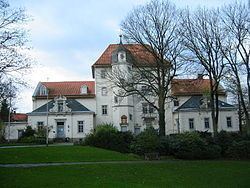Time zone CET/CEST (UTC+1/+2) Area 102.1 km² Local time Sunday 4:18 PM Dialling code 05381 | Elevation 205 m (673 ft) Postal codes 38723 Population 20,795 (31 Dec 2008) Postal code 38723 | |
 | ||
Weather 13°C, Wind E at 10 km/h, 51% Humidity Points of interest Städtisches Museum Seesen, Burgruine Wohlenstein, Burg Sehusa, Alte Schreibschule | ||
Seesen is a town and municipality in the district of Goslar, in Lower Saxony, Germany. It is situated on the northwestern edge of the Harz mountain range, approx. 20 km (12 mi) west of Goslar.
Contents
Map of 38723 Seesen, Germany
History
The Saxon settlement of Sehusa was first mentioned in a 974 deed issued by Emperor Otto II and Chancellor Willigis, from 1235 on it belonged to the Welf dukes of Brunswick-Lüneburg who had a castle erected. In 1428 Seesen received town privileges by Duke Otto II the One-Eyed of Brunswick-Göttingen. On 17 July 1810, Israel Jacobson dedicated in Seesen the first synagogue which employed an organ and a choir during prayer and introduced some German liturgy. This day is celebrated by Reform Judaism worldwide as its foundation date. In 1836 Heinrich Engelhard Steinweg (later named Henry E. Steinway) built his first grand piano in his kitchen in Seesen; the instrument is today on display at New York's Metropolitan Museum of Art.
Politics
Seats in the municipal assembly (Stadtrat) as of 2006 elections:
International relations
Seesen is twinned with:
